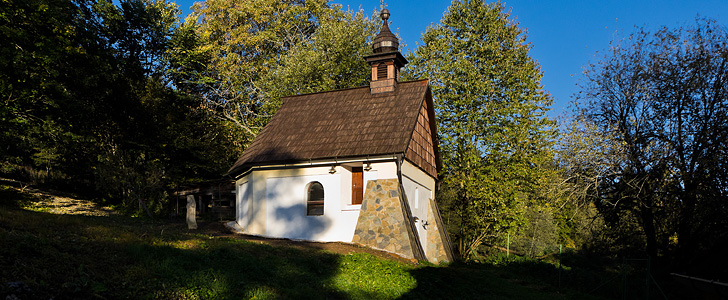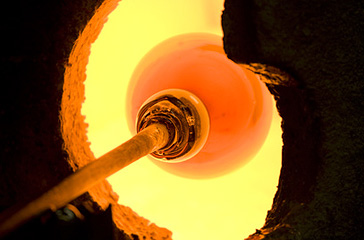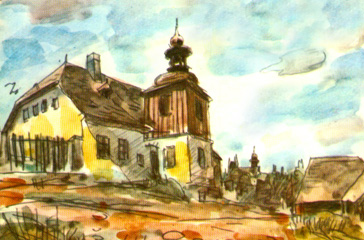Vogelsang
Since the Middle Ages there is a small settlement called Vogelsang on the hillside of the Huťské hory mountains (Smelter Mountains) above the valley of the Losenice River. Since 1947 it’s been called Podlesí, but this name has never been in common use.
The history of the settlement is connected with the Dominican Order at Klatau, to which Vogelsang belonged during the Middle Ages. The famous Vogelsang glassworks were located here. They were mentioned for the first time in 1584, when Rudolf II sold them to the barony of Kašperské Hory. The work of a family of glass makers called Schmidt was important for the glassworks, which were the supplier of glass for the Czech nobility. The Vogelsang glassworks were operating (with a few years of interruption in the 19th century) until the beginning of the 20th century.
In the past Vogelsang was a very lively place – there were for example a school, a post house and several other buildings. There was also a hunting lodge, a so called manor-house, built for the Hungarian princess Esterhazy. Later the lodge was turned into a leisure complex, which was destroyed by fire in the 1970s.
There was also a big farmstead with St. Barbara’s chapel in Vogelsang. Today the whole farmstead area has been renovated and turned into the leisure complex and pension Rezidence Vogelsang.
Rozhodnutím Ministerstva kultury ze dne 19.10.2018 byla kaple sv. Barbory téměř po 40 letech opět prohlášena kulturní památkou.

St. Barbara has always also been the miners’ saint; that’s why the chapel also reminds of the times when the vicinity of Kašperské Hory belonged to the oldest gold mining areas in pre-Hussite Bohemia. In the 10th-12th centuries the gold was panned. Later, in the 13th-14th centuries (under the reign of John of Luxemburg and especially later under the Roman emperor and Czech king Charles IV) the gold was mined. Since 1361 the protection of the whole region had been guaranteed by the royal castle Kašperk and its garrison.
After the Hussite wars mining declined. By and by, especially since the 16th and in the 17th century, trade, glassblowing, the trade of timber and paper, and stock farming developed. There were also numerous goldmines, tunnels and mills for gold-bearing ore in the valley of the nearby Zlatý potok (Gold Creek). An important mediaeval trade route called Zlatá stezka (Golden Path), which went over the wooded hillsides of the Huťské hory (Smelter mountains), where Vogelsang can be found, lead over the nearby Kozí hřbety towards Zhůří and into the neighbouring Bavaria.

There were many glassworks close to the Golden Road, among them the Vogelsang glassworks. Predominately they produced so-called “pateříky” – glass beads used to manufacture rosaries, small tobacco bottles and various other bottles, glasses and goblets made from abraded glass.
After World War II Vogelsang remained a lonely settlement; and thanks to its location close to the western border, the communist regime devastated and destroyed it on purpose, just like many other places in this area. Today only one family lives here permanently, but Vogelsang gradually livens up. We would be happy if you contributed to this revival with your visit. We will do everything possible so that you always will gladly return.
Here you can see pictures of Vogelsang from the time before we had it reconstructed and converted into its present state.
Vogelsang in Arts and Literature
In his lyric travel diary The musing Landscape 3, Ladislav Stehlík (1908 – 1987), Czech poet, novelist and painter, provides a vivid description of the magnificence of the landscapes surrounding Vogelsang. The book was released by Československý spisovatel in 1970.


